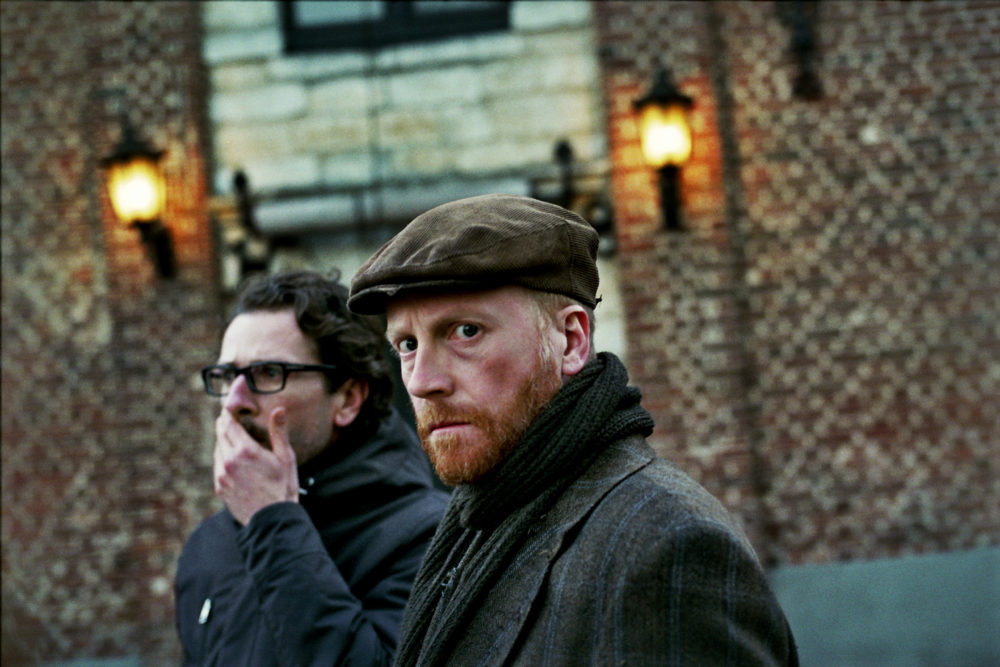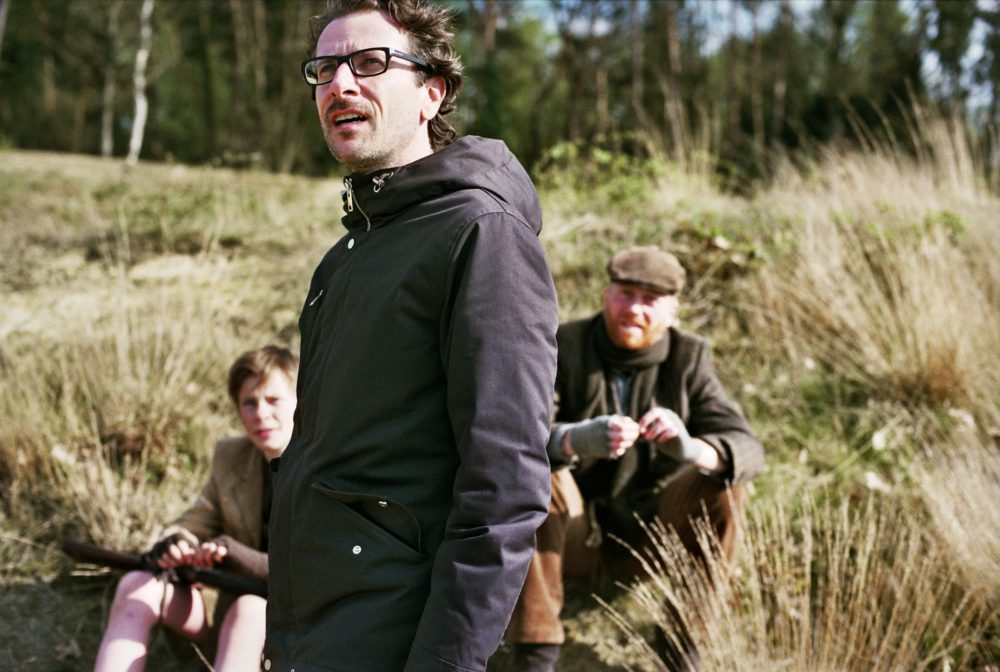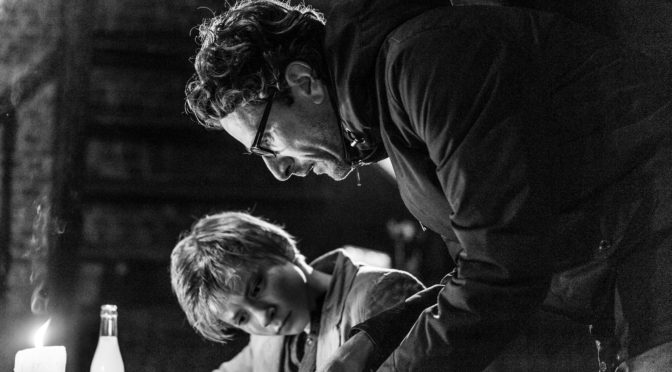SILENT CAMPINE is a short film following a father and son. Establishing their relationship as they hunt and survive in the absence of an ill mother, tension builds as the relationship and the two individuals are stretched to breaking point. With an aesthetic influenced by Westerns, a foreboding and effective score, and superb acting performances, the film has been nominated for and won numerous awards at film festivals. Steffen spoke to me about the film’s inspirations and where the project goes from here.
Jim: What informed the period setting, was it the Western influence or was there something else to it?
Steffen: It all started out with the idea of a disrupted father-son relationship, influenced by the great spaghetti-westerns of Sergio Leone, ONCE UPON A TIME IN THE WEST in particular. When you look at Belgian history, the period after World War I was ideal for this story: our country was still in shock after the brutalities of war and a lot of people ended up in poverty. As is the case with our protagonist, an ex-soldier who seeks refuge in alcohol and needs to hunt daily in order to survive and take care of his family.
Jim: What sort of score did you conceive? The sound really adds to the sense of conflict and dread, so how did you work with Bert Dockx to achieve that?
Steffen: I had long conversations with Bert, long before the shoot. I absolutely love his bands Flying Horseman – who, in my opinion, deserve way more international recognition as is the case now – and Dans Dans, a jazz-trio that also did a cover of an Ennio Morricone song – “The Sicilian Clan” – for instance. When I told him I wanted to shoot a short film influenced by the spaghetti western, he was immediately interested. We talked a lot about other scores, like the ones Jonny Greenwood did for Paul Thomas Anderson, and even Mica Levi’s brilliant score for Jonathan Glazer’s UNDER THE SKIN. Based upon our talks, he started to compose in his living room, very basic, very rude. Later on, when I sent him a first rough cut of the movie, we both knew that there should be more room for silence, like the title explains. It’s not only the area that’s very silent but also the people; they barely speak to each other. And if they do, it’s packed with tension. So to enhance that tension, Bert started to play with silences in his score. Until the end, where everything explodes.
Jim: Why did you choose to focus on a father-son dynamic? Was there an inspiration for this?
Steffen: The relationship with my own father was one with a lot of ups and downs. He divorced my mother when I was three years old and never really recovered from that incident. When I was young, like Juul in the movie, he could be proud of me when I did or said something wrong to my mother or her family. That’s extremely confusing. So I tried to show that confusion as well as I could in the movie. When I got older, I realised that my father was in fact a scared, introverted man, who couldn’t really cope with everyday life. He tried to solve this with alcohol, which eventually killed him. He passed away in November 2016, a couple of months before the shoot. And although it may sound very hard to believe after watching the film, it’s actually a sort of tribute to him.

“[My father] passed away in November 2016, a couple of months before the shoot. And although it may sound very hard to believe after watching the film, it’s actually a sort of tribute to him.”
Jim: The personal experiences that fleshed this out in your mind: did you communicate these to Jurgen Delnaet and Brecht Dael, or did you want to leave it clear for them to bring their own ideas or experiences to their roles?
Steffen: No, I didn’t. I wanted them to dig up their own experiences. At a first reading it was clear that Jurgen and Brecht got along well with each other and I wanted them to build up their ‘father-son connection’. Their input was spot on from the beginning.
Jim: I understand the locations in the shoot include where you scattered your own father’s ashes – did this come about because it was a location you knew in de Stille Kempen, or given its a tribute to your father, was a more important personal decision than purely a production one?
Steffen: The location was owned by my grandfather back in the days. Now it’s part of a protected forest area. When we went on a recce, it was clear for the DOP and myself that it would be one of our locations in the movie. So it’s a coincidence: it was chosen both on a personal and a production level.
Jim: There is a feeling of watching people asserting control and dominance in an aggressive way – the first scene, the father over the son, the neighbour over the father, and so forth – was this a comment on the more damaging aspects of the mens’ masculinity?
Steffen: This is how people tend to react to each other in de ‘Stille Kempen’ – Silent Campine – the area where I grew up, especially the older generations. It can be hard to grow up there when you’re not that resilient. It’s all about dominance, and being jealous of the other one, when they have it better than you. That’s also why I chose to not show any women in the movie: the mother is mortally ill and we never see her, we only hear her coughing. But everybody misses her: the son, the father, even the viewer. We all should feel that, if the mother was there, this would probably never have happened.
Jim: With that in mind, do you feel depicting the absence of certain figures – and the effect that has on the remaining characters – plays just as important a role in filmmaking in communicating their impact as people? I agree that absence is felt very strongly in the way the son and father interact.
Steffen: I absolutely do. The mother figure is essential and here it’s absent: there’s no balance anymore and the son is still too young to make the right decisions. And I’m also intrigued by the lack of human communication and what it does to people, especially children and teenagers. They tend to copy what adults do but sometimes it’s better they don’t, like in SILENT CAMPINE.

“…I’m also intrigued by the lack of human communication and what it does to people, especially children and teenagers. They tend to copy what adults do but sometimes it’s better they don’t…”
Jim: How did you go about casting Brecht Dael to play Juul? There’s not much dialogue so there needs to be an expressiveness without words, whilst also being quite passive when required.
Steffen: As he was bit too young at that time, I initially didn’t invite him to the casting. But he was suggested by a friend, also an actor, who saw him play in a student short. As soon as he started playing, we knew immediately he would be perfect for the job. I asked him to look straight into the camera (which is also the beginning of the movie) and the intensity in his eyes was remarkable. He’s also a very intelligent, very ease to direct and never complained, although there were some long nights and cold temperatures. An absolute pleasure to work with.
Jim: You want to extend this work to feature length, yes?
Steffen: I’d love to! The working title is BLOOD RED DAWN and it tells the story of a Basque 15-year old girl on the run for General Franco on the eve of World War II. She eventually ends up in a small Flemish village, where she’ll encounter all the ingredients you could find in SILENT CAMPINE. Although I recently heard from the Flemish Audiovisual Fund that they find the treatment too ambitious, there’s always the Belgian Tax Shelter system and I’m now looking for co-production partners to make this work. The Flemish village can easily be replaced by an Irish or Scottish one, for instance. So feel free to contact me if you’re interested to support a film that can be seen as a love letter to the golden age of Sergio Leone and the recent revival inspired by the Coen Brothers!

